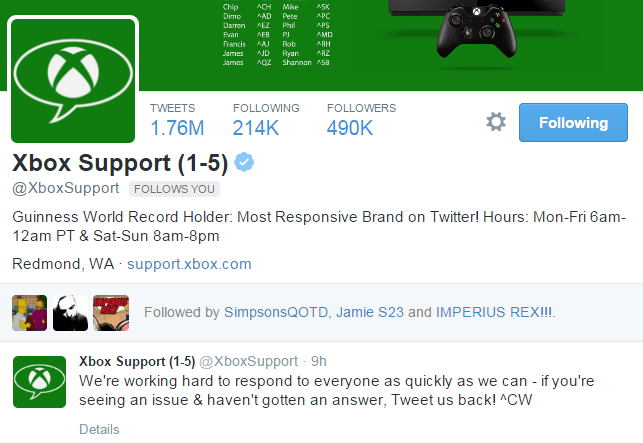Social media marketing is still a relatively new weapon in the arsenal of publicity and sales departments across the world.
While it took some time for business to begin employing the technology into their repertoire, many are still struggling, trying to find a way to properly leverage the power of social networks.
Social media experts charge a lot to manage social media campaigns, offering services that range from setting up profiles across the various networks to creating posts and content to be shared through these systems.
[Tweet “Big businesses sometimes gets social media wrong. Get it right with these simple tips…”]There are some key things you can do to increase your reach and effectiveness with social media without having to break the bank and hire a so-called expert.
The best piece of advice one can give when starting out marketing your company, brand, product, or service is to avoid copying your competitors.
Many companies, especially many of the large, household name firms make a wide variety of mistakes when using Facebook, Twitter, Google Plus, Pinterest, and other social media networks today.
In fact, keeping an eye on some of these big companies and their social media activity can serve a purpose by showing you exactly what not to do.
Engagement vs Sales
Look at some of the social media posts from big companies. What are they? You’ll see plenty that are merely advertisements for their products or services.
People don’t go to Facebook, Twitter, Google Plus, etc. to be sold to. They are there to make connections, relax, waste time, play games, watch funny cat videos, and so on.
If your business’s Facebook page looks like a fire sale for your store, you’re doing it wrong.
Instead, use your social media postings to gain people’s attention and connect with them.
Your connections and engagements are–like your sales–going to be based more on emotion than on logic. Don’t just showcase your products and special offers.
Give people something worth commenting on, sharing, and liking.
It Isn’t All About You
While the time your company spends on social media is an investment, it isn’t enough to limit the time to posting interesting stories, memes, information, and so on via your social media platform of choice.
You need your social media team to get out there and connect with others.
Develop and follow guidelines for your organisation that include connecting with other social media profiles, complementary businesses, and posting comments and interacting with posts made by others. There is reciprocal benefit to doing so.
By showing real interest in what others are doing, there is a better chance that they will show more interest in your company.
This interest is what drives engagement and reach, which should always be the core philosophy behind your social media plan.
Be Responsive
When people interact and engage with your business online, they are looking for you to respond.
Canned responses can help speed this process along, but have variety. If you only post three or four different replies, people are going to see through that quickly.

The Xbox support channel holds the record for ‘most responsive brand on Twitter‘, after they responded to over 5,000 questions in an average time of 2 mins 42 seconds between 12-18 March 2010.
Furthermore, do not ignore or delete those negative comments. Instead, respond to them.
It immediately sets off alarm bells for consumers when they see a public platform with no negative comments, even if they can’t put their finger on it right away. If you allow those negative comments to remain, it also gives you the opportunity to address them.
People understand that we are all human and no one is perfect. The image of perfection is often unsettling.
Showing how we handle adversity, address customer complaints, and go out of the way to make things right can go a long way.
One last note on responsiveness: Some companies go so far as announcing when they staff their social media pages, so people don’t necessarily expect a response in the middle of the night.
Just because your social media team might only work a couple hours a day doesn’t mean they should ignore posts, messages, and comments that come through during their off hours.
Make the best attempt to respond to all inquiries, comments, and so on within a day or so of them being posted.
Know What You are Posting
This one has become very important for companies over the past year or so. The problem stems from social media posts for businesses being in a hurry to try and latch on to something hot as a way to get more play on their posts.
Popular trends often include hashtags and, when you are using a social media platform such as Twitter, your dashboard quickly tells you what is trending.
The hashtag may seem innocuous enough but can spell disaster without exercising some care.
Many companies have landed in hot water over improper use of social media hashtags such as #WhyIStayed or #Aurora.

The social team at DiGiorno Pizza, an American frozen pizza company, had to admit to not checking what the #WhyIStayed hashtag signified before using it to promote their brand.
These ill-fated tweets serve as excellent examples of why one should keep abreast of what’s happening with real-time online trends instead of just skimming over incoming reports.
Develop a Social Media Marketing Strategy
For your company’s online marketing efforts to be successful, you need to have a comprehensive plan in place.
Your social media marketing strategy should be tied to your various onsite and offsite marketing efforts. It all helps to build the company brand and bring in new leads while also helping to increase the lifetime value of existing customers.
Your social media strategy should include a review of branding, mission statements, unique selling proposition (USP), time spent of various social media platforms, what kinds of posts to set on different networks, who to connect with, when is the most effective time to share posts, and key performance indicators to review via regularly schedule analytics.
Key performance indicators would include how many fans or connections are made over a given period of time; the number of posts; the average number of likes, shares, comments; and, incoming traffic to the website and business due to social media efforts.
 Follower growth – Twitter Analytics
Follower growth – Twitter Analytics
Take a look at our post on what KPIs to look for when registering the success of your social media campaigns.
Make the Best of Your Social Media Campaigns
While it seems just about everyone and every business has a Facebook page, Twitter account, Pinterest board, or LinkedIn profile these days, some are much more effective than others.
Monitor what draws in connections and gets them to engage. Understand that just because a business or brand has a lot of followers doesn’t mean that they are the model you should be following. Social media isn’t something that you can simply throw money and have work for you.
You have to have the right mindset when approaching the various marketing platforms and institute the proper policies and procedures for each of those networks.
Don’t fall into the mistakes made by the big companies, trying to use social networks as just another advertising medium. Instead, leverage the potential of those networks by connecting with and engaging potential and existing customers.
Review your tactics periodically and adjust as necessary.
Your Say!
What social media fails have you seen online? How do you think big businesses could better adapt to meet consumers social media requirements? Drop us a message in the comments,
